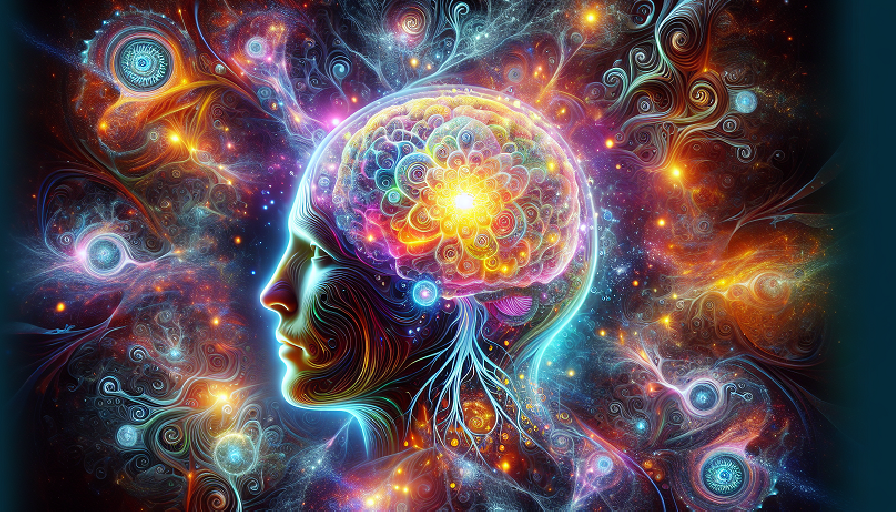
Creativity is often romanticized as a spontaneous burst of genius—the stroke of inspiration that comes in the shower or during a long walk. But more often than not, creativity is born not in freedom, but in friction. When your options are limited, when the clock is ticking, when the tools are missing—that’s when the brain shifts gears. That’s when forced creativity kicks in.
Far from being the enemy of innovation, constraints are some of its greatest allies. Deadlines, limited resources, or tight parameters don’t shut down creativity—they channel it. Understanding this counterintuitive truth can unlock new potential in your work, your problem-solving, and your daily decision-making. And as it turns out, your brain may be wired to perform better when it’s gently boxed in.
Contents
What Is Forced Creativity?
Forced creativity refers to the process of generating novel solutions under limiting conditions. It happens when external obstacles or restrictions push the brain to break habitual patterns and think in new ways.
Unlike traditional brainstorming, which emphasizes free-flowing ideas and open-ended thinking, forced creativity is rooted in structure. And that structure sparks something remarkable—an increase in cognitive effort, flexibility, and insight.
Common Types of Creative Constraints
- Time Limits: Short deadlines force rapid ideation and decision-making.
- Material Restrictions: Limited tools or resources encourage inventive use of what’s available.
- Rule-Based Challenges: Constraints like “no digital tools” or “must use only recycled materials” inspire lateral thinking.
- Contextual Barriers: Working in unfamiliar environments or with diverse teams pushes new perspectives.
It may feel uncomfortable at first, but research shows that such constraints can actually enhance creativity—by pushing the brain out of its default mode and into more dynamic mental territory.
The Neuroscience Behind Creativity Under Pressure
When facing a problem, the brain typically defaults to known solutions stored in long-term memory. This is efficient, but not always imaginative. Constraints disrupt that pattern, nudging the brain to recruit additional networks—especially those involved in cognitive flexibility.
The Cognitive Networks at Play
- Default Mode Network (DMN): Engaged in idea generation and daydreaming.
- Executive Control Network (ECN): Responsible for planning, evaluating, and regulating thought.
- Salience Network: Helps the brain switch between DMN and ECN based on relevance and novelty.
During constrained problem-solving, these networks begin to dance. The DMN produces unusual or abstract ideas, the ECN evaluates their usefulness, and the salience network toggles back and forth to manage the process. The result? A brain working harder—and smarter—to make something out of (almost) nothing.
Why Constraints Lead to Better Ideas
It may seem strange, but research consistently finds that limits can actually improve creative outcomes. One classic study found that students who were given fewer resources created more original and valuable designs than those with unlimited supplies.
How Constraints Spark Innovation
- They eliminate overwhelming options: Reducing choice helps focus cognitive effort.
- They increase engagement: Limited tools force active problem-solving rather than passive reliance.
- They disrupt habitual thinking: Familiar solutions won’t work, so the brain explores new territory.
- They encourage risk-taking: With less to lose, people are more willing to try unconventional ideas.
Some of history’s greatest breakthroughs were born from tight circumstances. Think of NASA engineers who saved Apollo 13 astronauts using only the materials onboard the spacecraft. Or hip-hop DJs who pioneered looping techniques because they couldn’t afford full bands. Constraint wasn’t the barrier—it was the breakthrough.
How to Use Obstacles as Creative Fuel
Creativity thrives not despite difficulty, but because of it. The trick is learning how to turn pressure into productive focus. Whether you’re writing, designing, problem-solving, or inventing, there are simple ways to apply creative constraints to your advantage.
Strategies to Spark Forced Creativity
- Impose artificial limits: Set timers, word counts, or material restrictions before starting a task.
- Flip the problem: Ask, “What would this look like if I had to do it backward or upside down?”
- Work within a box: Limit yourself to only three tools, three colors, or three variables.
- Use random prompts: Pick a random word or image and try to incorporate it into your project.
- Collaborate with constraints: Do a timed group activity where each person adds one limited piece at a time.
These aren’t gimmicks. They’re deliberate ways to nudge the brain out of well-worn paths and into discovery zones. When paired with cognitive tools like nootropics—especially those known to support focus and adaptability—they can take your mental performance to the next level.
Nootropics and Cognitive Flexibility
Cognitive flexibility—the ability to shift thinking patterns and adapt to new information—is at the heart of forced creativity. Certain brain supplements may help support this by enhancing neurotransmitter balance, energy metabolism, and neural communication.
Top Nootropic Ingredients for Creative Thinking
- L-Theanine + Caffeine: Improves focus and alertness without jitteriness.
- Rhodiola Rosea: Supports stress resilience and mental stamina.
- Noopept or Alpha-GPC: May enhance memory and mental clarity during demanding tasks.
- Citicoline: Boosts mental energy and neuroplasticity, key for flexible thinking.
While no supplement replaces skill or effort, these compounds can provide a supportive edge—especially when tackling tasks under pressure or seeking creative breakthroughs.
Creativity Loves a Challenge
When we remove all limitations, we often remove focus. True creativity doesn’t come from endless freedom—it comes from navigating obstacles with imagination and grit. Forced creativity is a skill, a mindset, and a secret weapon in a world that prizes innovation but often forgets how it happens.
The next time you’re stuck, don’t wait for the perfect condition or the ideal tool. Lean into the constraint. Shrink the palette. Set a timer. Use what you’ve got. Your brain will surprise you.
And if you’re looking to support that process from the inside out, nootropics may help sharpen your focus, boost mental resilience, and keep your creativity flowing—especially when the pressure’s on and the options are few. Because when resources are low, your mind’s potential doesn’t shrink—it just gets smarter.

